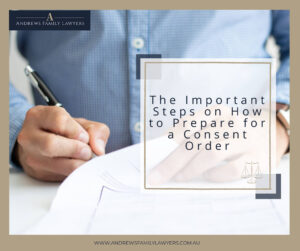One of the most critical aspects of any separation or divorce is determining a fair division of assets to ensure that both parties can move forward on a secure financial footing.
In this article, we will offer valuable insights into the process of determining a fair division of assets in family law cases.
We will explore the key factors and considerations that must be considered when dividing property between separating partners, ensuring you have a comprehensive understanding of the process and the various options available to you.
4 Simple Steps for Dividing Assets in Family Law
A four-step process is typically used in Australia to determine a fair and equitable distribution of assets in family law cases. Understanding each step is essential in navigating this complex process:
1. Identifying the Asset Pool
The first step involves compiling a comprehensive list of all assets and liabilities owned by both parties, whether jointly or individually. This includes real estate, vehicles, bank accounts, superannuation, investments, and debts.
2. Assessing Contributions
The next step requires consideration of each party’s financial and non-financial contributions during the relationship. Financial contributions may include salaries, inheritances, or business interests, while non-financial contributions could involve child care, homemaking, or supporting the other party’s career.
3. Evaluating Future Needs
The future needs of each party are also taken into account, including factors such as age, health, income-earning capacity, and any responsibilities for the care of children.
4. Ensuring a Just and Equitable Outcome
Finally, after assessing the asset pool, contributions, and future needs, a fair and equitable division of assets must be determined to meet each party’s needs and circumstances.

Key Factors and Considerations in Assessing Contributions
When evaluating the contributions made by each party in a relationship, there are several factors to consider, including:
1. Direct Financial Contributions
Earnings from employment, business ownership, or passive income sources such as rent or investments are considered when determining each party’s direct financial contributions.
2. Indirect Financial Contributions
Financial efforts that indirectly contribute to the relationship are also considered, such as paying for the education or training of the other party or providing guarantees for loans.
3. Non-Financial Contributions
The court considers the non-financial contributions made by each party, such as the role of homemaker, child-rearer, or caregiver for family members.
4. Contributions Before and After Separation
Assets and liabilities brought into the relationship and those acquired post-separation may also be considered in assessing contributions.
Identifying Your Future Needs
When determining the division of assets, it is crucial to consider each party’s future needs and circumstances. Key factors include:
1. Age
The age of each party is often an essential factor, as older individuals may require additional financial security due to a reduced capacity to earn income or increased healthcare expenses.
2. Health
The health of each party may impact their future financial needs, particularly in cases where long-term medical care is required, or earning capacity is limited due to illness or injury.
3. Caring Responsibilities
If one party is the primary caregiver for children or other family members, this may affect their earning capacity, thereby having an impact on the division of assets.
4. Earning Capacity
Each party’s ability to earn income in the future can significantly influence the division of assets, considering factors such as education, work history, and available opportunities.

Important: How to Split Assets in Divorce in Australia?
Steps to Achieve an Agreement for a Fair Division of Assets
Reaching an agreement on the division of assets requires compromise, negotiation, and a commitment to achieving a fair outcome. Some strategies to ensure a smooth and equitable settlement include:
Step 1: Open Communication
Foster open and honest dialogue between both parties to resolve disputes more effectively.
Step 2: Financial Disclosure
It’s crucial to provide full and transparent disclosure of all assets and liabilities to facilitate a fair division of assets.
Step 3: Legal Advice
Engage a qualified family lawyer who can help you understand your legal rights and provide guidance throughout the negotiation process.
Step 4: Alternative Dispute Resolution
If negotiations stall, consider mediation or arbitration as alternatives to litigation. These methods can save time and resources by avoiding a lengthy court battle.
Conclusion
Determining a fair division of assets in family law cases is a complex and often emotionally charged process. By understanding the key factors and considerations, you can make informed decisions and achieve a just and equitable outcome.
At Andrews Family Lawyers, we aim to provide honest, practical advice to help you navigate the complex process of dividing your property after a relationship breakdown.
With years of experience in handling property settlements, parenting arrangements, dispute resolution, consent orders, and divorce, we are well-equipped to guide you through every step of your family law journey.
If you need assistance with family law matters, Andrews Family Lawyers can help.
Related Articles
- Binding Financial Agreements & Property Settlement: How to Achieve Clarity and Fairness
- Consent Orders vs. Binding Financial Agreements: Deciding the Best Approach for You
- How to Split Assets in Divorce in Australia? Who Gets What?
- What Is a Binding Financial Agreement? Know How It Can Protect Your Assets
- What to Do When an Ex Wife or Ex Husband Delaying Property Settlement?




